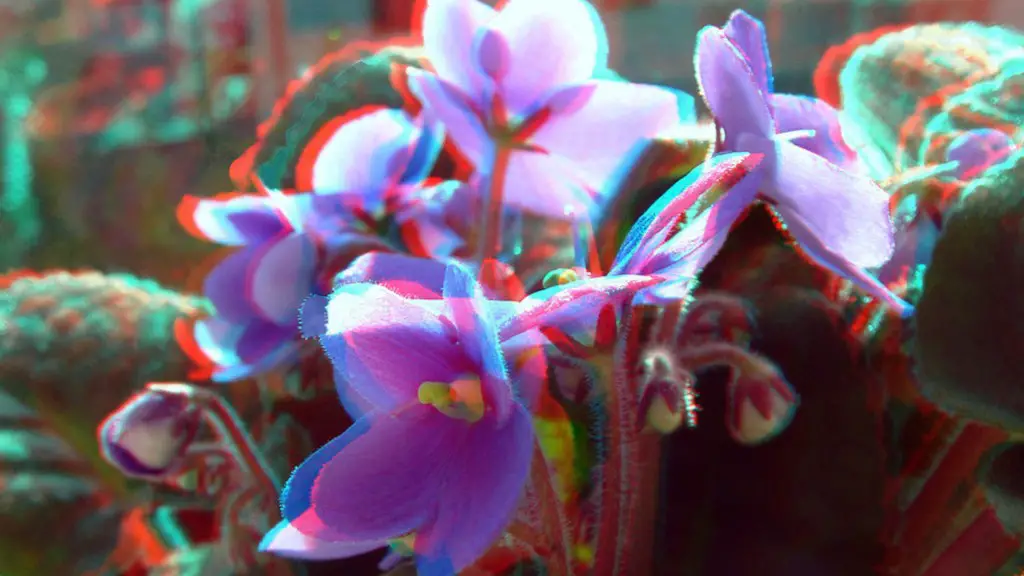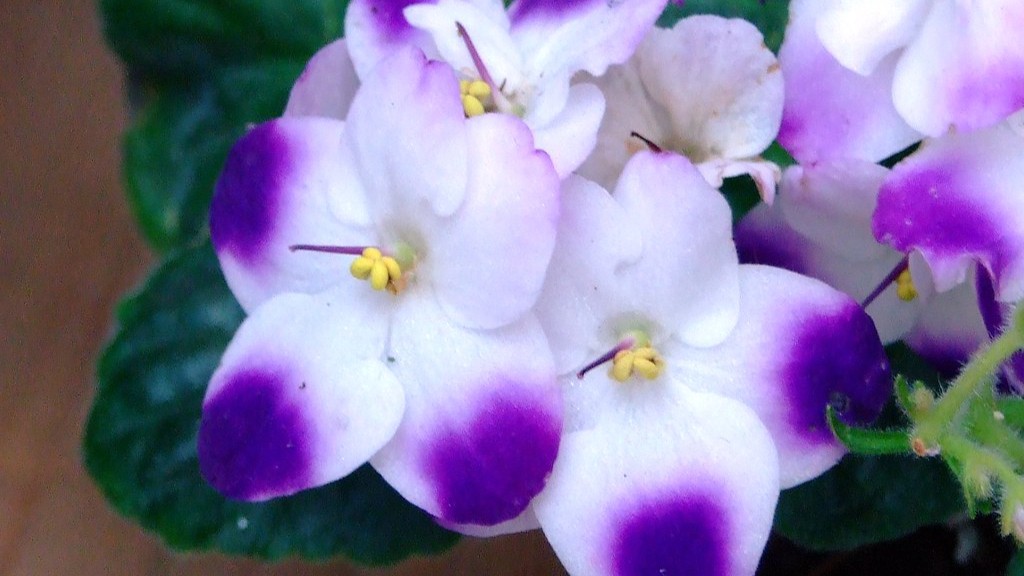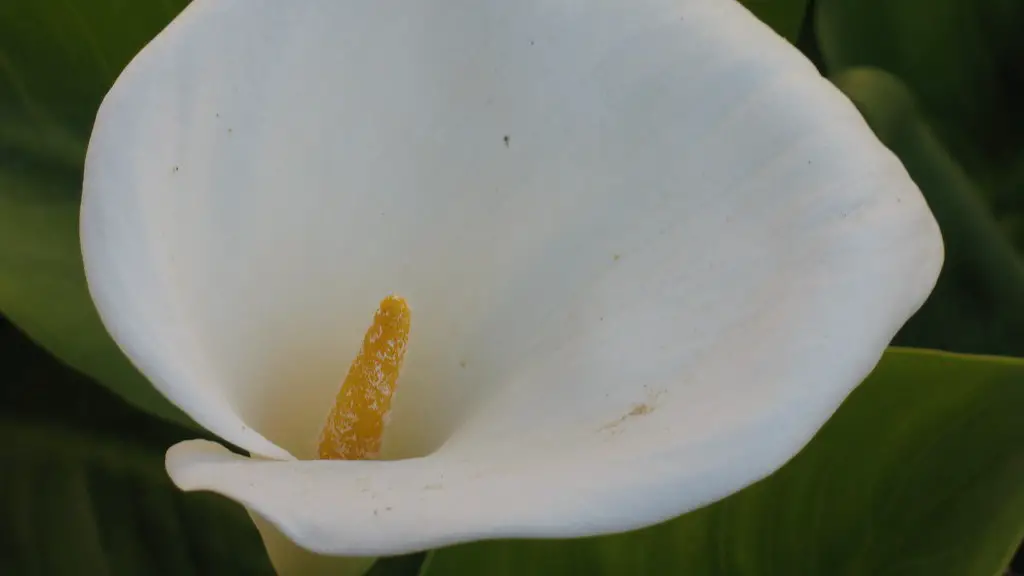African violets are a popular type of houseplant, known for their pretty purple flowers. However, they can sometimes get leggy, meaning that their stems become long and thin. There are several reasons why this might happen, including lack of light and too much fertilizer. If your African violet is looking leggy, try moving it to a brighter spot and cutting back on fertilizer.
One of the main reasons why African violets get leggy is because they are not getting enough light. If they are not getting enough light, they will start to stretch out and become leggy in order to try and get to a source of light. Another reason why African violets can get leggy is because they are not getting enough nutrients. This can happen if the soil is not meeting their needs or if they are not being fertilized regularly.
How do I fix my African violet leggy?
If you have an African violet that is becoming leggy, the best way to combat this is to repot the plant and fertilize it with Espoma’s Violet! liquid plant food. This will help keep the plant growing new leaves, which will keep it from becoming leggy. Additionally, this will enhance the colors of your flowers.
African violets typically develop necks as the lower leaves fall off. This gives the plant a palm tree-like appearance. However, this isn’t always normal development. If you notice your African violet developing a neck, it’s best to consult with a professional to determine the cause.
What do Overwatered African violets look like
If you notice any of the following signs, your African violet is likely overwatered:
1. Droopy, soft, and mushy leaves
2. Wilting
3. yellowing or browning leaves
4. stunted growth
5. root rot
If you think your plant is overwatered, the best course of action is to let the soil dry out completely before watering again. You may also need to repot the plant in fresh, dry soil.
A wicking system is when you water your African violets from the bottom instead of the top. To do this, you’ll need a tray or saucer that the pot can sit in, and a piece of cotton or wool that can act as a wick. Simply soak the wick in water, and then place it in the tray. Make sure the end of the wick is not touching the bottom of the pot, as this will cause the plant to be overwatered. The water will then be wicked up into the pot, and your plant will have a constant supply of moisture.
When should African violets be repotted?
Successful growers of African Violets recommend repotting with fresh potting soil, twice a year or more. At the very least, an African Violet should be repotted whenever the plant becomes rootbound, ie, the Violet has outgrown its current pot to the extent that its roots are growing out and around the rootball.
African violets need to be repotted every one to two years to ensure they have enough room to grow. If you notice your plant’s leaves are starting to crowd the pot, it’s time for a new home.
Do African violets like bigger pots?
When it comes to African violets, it’s best to err on the side of a smaller pot. A pot that’s too large can lead to problems with overwatering, which can be detrimental to the plant. Aim for a pot that’s just a few inches wider than the plant itself.
The best way to deal with an African Violet neck is to either repot the plant a little deeper to bury the neck, or to chop off the stem, scrape the scales off the bottom, and plant it in fresh soil.
What is the secret to growing African violets
To get the best color and blooms from your plants, grow them in bright, indirect light. A plant stand three feet away from a west- or south-facing window is an ideal location. Plants will still grow when situated right beside north- or east-facing windows, but leaves will be thin and spindly, and plants less likely to bloom.
Water your African violet carefully to avoid leaf spots and crown rot. Use room-temperature water and never mist the foliage. Water the plant at the base, taking care not to get the crown of the plant wet.
What kills African violets?
If you’re looking to kill violets without damaging the grass, then you’ll want to use a broadleaf herbicide that contains 2,4-D or Dicamba. Drive (quinclorac) is also a great choice for killing violets.
It is important to be aware of the quality of your tap water when growing African violets. Chlorine levels may fluctuate, depending on the season, and in some areas tap water may have high amounts of chlorine, chloramines, or dissolved solids. All of these things can adversely affect your African violets. If possible, it is best to use filtered or distilled water to help ensure the health of your plants.
Do African violets need full sun
African violets need indirect sunlight, so a north- or east- facing window is best. Keep plants away from cold glass and rotate the pot once a week so all leaves receive light. Extend daylight by placing African violets under a grow light during winter months.
Watering your plant is very important to encourage blooming. You should keep the soil moist to dry, and allow the soil around the roots to dry out before watering. This will encourage the plant to bloom. Watering from the bottom with room temperature water is the best way to water your plant. You can do this by placing the plastic grower’s pot in water and allowing the plant to absorb the water for no more than 30 minutes.
Should you water African violets from the bottom?
If you are wondering whether to water your African violet from the top or bottom, don’t worry – either is fine. Just be sure to use lukewarm or warm water, as cold water can be harmful to the plant. And if you do water from the top, be careful not to get water on the leaves if the plant is in the sun, as this can cause leaf spots.
African Violet Lover is a great plant for anyone who loves huge blooms. The grower suggested using special potting soil for African Violets when it needed transplanted, which I did using Miracle-Gro. The plant went crazy with blooms afterwards!
Conclusion
One of the main reasons African violets get leggy is because they are not getting enough light. If your African violet is not getting enough light, it will start to grow taller and taller in an attempt to reach the light. Another reason African violets get leggy is because they are not getting enough nutrients. If your African violet is not getting enough nutrients, it will also start to grow taller and taller in an attempt to reach the light.
One possible reason why african violets get leggy is that they are not getting enough light. African violets need bright, indirect sunlight in order to grow properly. If they are not getting enough light, they will become leggy in order to try to reach the light source. Another possible reason for leggy growth is over-watering. African violets need to be watered carefully, and too much water can cause them to stretch out and become leggy.





